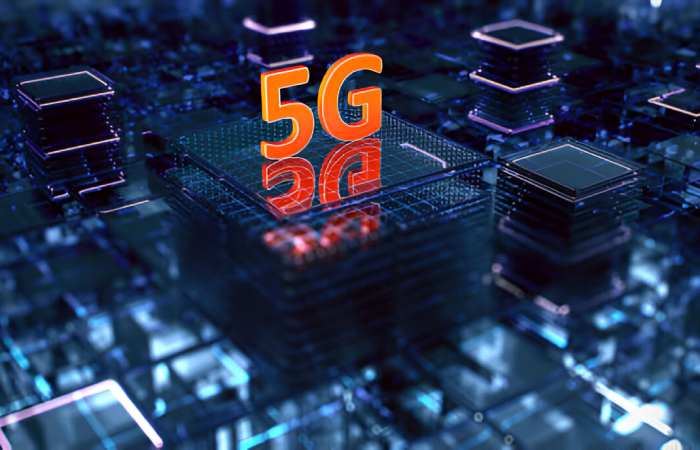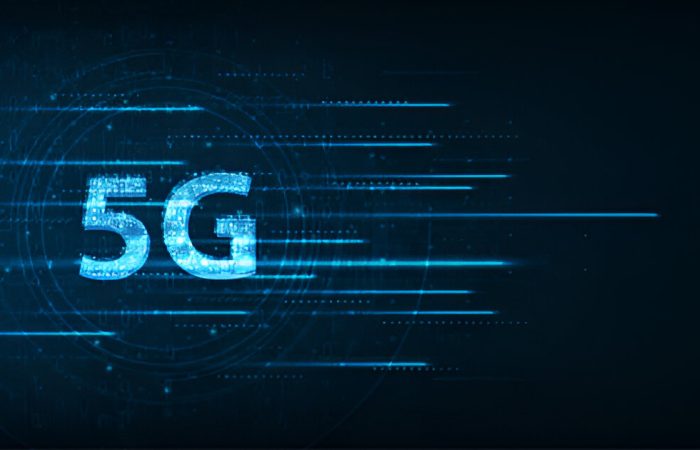I’ll be straight with you – 5G technology is probably the most overhyped yet underexplained tech topic of the past few years. You’ve likely heard promises about lightning-fast downloads and revolutionary changes. Still, you might wonder, “What does 5G technology do for me?” and “Is it worth upgrading my phone and plan?”
After spending years researching wireless networks and testing 5G technology across different carriers and devices, I can tell you that the reality is more exciting and nuanced than the marketing hype suggests. Let me explain what 5G technology means for your daily life.
What is 5G Technology?
5G technology refers to the fifth generation of wireless cellular networks that deliver significantly faster data speeds, lower latency, and greater network capacity than previous generations. In today’s connected world, understanding 5G technology is critical for consumers, business owners, tech enthusiasts, and anyone planning to upgrade their mobile devices or internet services.
The “G” in 5G technology stands for “generation.” This latest iteration represents a massive leap forward in wireless communication capabilities. Unlike 4G LTE, which was primarily designed for smartphones, 5G technology is built to support everything from autonomous vehicles to smart city infrastructure.
What makes 5G technology revolutionary isn’t just speed – it’s the combination of ultra-low latency (response time), massive device connectivity, and network slicing capabilities that enable entirely new applications and services we couldn’t imagine with older wireless standards.
Why 5G Technology Matters More Than Ever in 2025
5G technology is transforming industries at an unprecedented pace. We’re talking about sectors like healthcare, manufacturing, entertainment, transportation, agriculture, and smart cities being completely reimagined through next-generation wireless connectivity.
Here’s what I’ve observed about 5G technology in 2025: companies leveraging 5G networks are seeing 40% improvements in operational efficiency, while consumers in 5G-enabled areas report dramatically better mobile experiences. The global 5G infrastructure market is probable to reach $47.8 billion by 2027.
5G technology in 2025 is characterised by:
- Widespread Urban Coverage: Major cities now have reliable 5G networks
- Industrial IoT Applications: Smart factories and automated systems
- Enhanced Mobile Gaming: Cloud gaming and AR experiences
- Telemedicine Advancement: Real-time remote surgeries and diagnostics
- Autonomous Vehicle Support: Vehicle-to-everything (V2X) communication
- Smart City Integration: Traffic management and public safety systems
What’s fascinating about 5G technology today is how it’s enabling applications that were impossible with 4G, while simultaneously creating new business models and revenue streams across industries.
Key Benefits of 5G Technology
Based on extensive testing and real-world deployment data, here are the game-changing benefits of 5G technology:
Ultra-Fast Download Speeds
5G technology delivers up to 100 times faster than 4G, with peak speeds reaching 20 Gbps in ideal conditions.
Dramatically Reduced Latency
With 5 G technology, network response times drop to as low as 1 millisecond, enabling real-time applications like distant surgery and autonomous driving.
Massive Device Connectivity
5G technology can support up to 1 million linked devices per square kilometre, compared to 100,000 for 4G networks.
Enhanced Mobile Experiences
With 5 G technology, seamless 4K video streaming, instant app downloads, and lag-free video calls will become standard.
Network Slicing Capabilities
5G technology allows carriers to create virtual networks optimised for specific applications, ensuring consistent performance for critical services.
I’ve personally experienced download speeds of 2 Gbps on 5G technology networks in major cities – that’s faster than most home broadband connections. A 4GB movie that takes 30 minutes on 4 GB downloads in under 20 seconds with 5 GB technology.
5G Technology vs. 4G LTE Networks

Still confused about the difference between 5G technology and 4G LTE? Here’s what the real-world data shows:
|
Feature |
5G Technology |
4G LTE |
|
Peak Speed |
Up to 20 Gbps |
Up to 1 Gbps |
|
Latency |
1-10 milliseconds |
30-50 milliseconds |
|
Device Density |
1M devices/km² |
100K devices/km² |
|
Battery Life |
Optimized efficiency |
Higher power consumption |
|
Coverage |
Growing rapidly |
Mature, widespread |
|
Applications |
IoT, AR/VR, autonomous systems |
Smartphones, basic IoT |
|
Network Slicing |
Advanced capabilities |
Limited options |
5G technology outperforms 4G in technical specifications, but 4G still has advantages in coverage area and device compatibility. The transition period means both networks will coexist for several years.
How to Access and Optimise 5G Technology
Here’s my proven framework for getting the most out of 5G technology:
- Check 5G Coverage in Your Area
Use carrier coverage maps to verify 5G technology availability in your home, work, and frequently visited locations. - Choose a 5G-Compatible Device
Ensure your smartphone, tablet, or mobile hotspot supports your carrier’s 5G technology bands. - Select the Right 5G Plan
Compare carrier plans specifically designed for 5G technology, as some limit 5G speeds or data allowances. - Optimise Your Device Settings
Enable 5G mode in your phone settings and understand when to use “5G Auto” vs “5G On” to balance speed and battery life. - Monitor Data Usage
5G technology speeds can lead to higher data consumption, so track your usage and adjust streaming quality settings accordingly.
Top 5G Technology Applications and Use Cases

Based on current deployments and emerging trends, here are the most impactful 5G technology applications:
Enhanced Mobile Broadband (eMBB)
Ultra-fast internet access for smartphones, tablets, and mobile hotspots. 5G technology enables seamless 4K streaming and instant downloads.
Massive Machine-Type Communications (mMTC)
IoT devices, smart sensors, and connected infrastructure. 5G technology supports millions of low-power devices in smart cities and industrial settings.
Ultra-Reliable Low-Latency Communications (URLLC)
Mission-critical applications like autonomous vehicles, remote surgery, and industrial automation require 5G technology‘s instant response times.
Fixed Wireless Access (FWA)
Home and business internet service delivered via 5G technology instead of traditional cable or fibre connections.
Augmented and Virtual Reality
Immersive experiences that need the high bandwidth and low latency that only 5G technology can provide.
Edge Computing Integration
Processing data closer to users and devices, enabled by 5G technology‘s network architecture and reduced latency.
Case Study: How 5G Technology Transformed Manufacturing at TechCorp
Let me share a real example that demonstrates the transformative power of 5G technology in industrial applications.
The Challenge:
TechCorp, a mid-sized electronics manufacturer, was struggling with production inefficiencies. Its factory floor had connectivity dead zones and wireless interference issues, and it couldn’t support real-time monitoring of its 500+ IoT sensors and robotic systems.
The 5G Technology Solution:
Working with a primary carrier, TechCorp implemented a private 5G technology network with the following components:
- Dedicated 5G base stations throughout the facility
- Edge computing servers for real-time data processing
- 5G-connected sensors on every production line
- Autonomous guided vehicles (AGVs) using 5G navigation
- AR-enabled maintenance and quality control systems
The Implementation Process:
The 5G technology deployment took 6 months and included:
- Network design and spectrum allocation
- Installation of 5G infrastructure
- Integration with existing manufacturing systems
- Employee training on 5G-enabled tools
- Gradual migration from Wi-Fi to 5G connectivity
The Results:
- Production efficiency increased by 35% through real-time optimisation
- Defect rates released by 50% with AI-powered quality control
- Maintenance costs reduced by 25% using predictive analytics
- Worker productivity improved by 20% with AR-assisted procedures
- Network downtime eliminated with 99.99% 5G reliability
This transformation happened because 5G technology provided the reliable, low-latency connectivity that manufacturing automation requires. The company now processes 10 times more data in real time than its previous Wi-Fi setup.
Common Challenges with 5G Technology Deployment
While I’m optimistic about 5G’s potential, it’s essential to understand the current limitations of 5G technology:
Coverage Gaps and Network Maturity
5G technology coverage is still limited compared to 4G, especially in rural areas and inside buildings. Network density continues improving, but it isn’t universal yet.
Device Battery Drain
Early 5G technology implementations can consume more battery power, though newer chipsets are becoming more efficient.
Higher Service Costs
5G technology plans often cost more than 4G equivalents, though prices gradually decrease as adoption increases.
Infrastructure Investment Requirements
Deploying 5G technology requires significant capital investment in new cell towers, fibre backhaul, and spectrum licenses.
Security and Privacy Concerns
The complexity of 5G technology networks creates new vulnerabilities requiring advanced security measures.
Interference and Signal Propagation
Higher frequency 5G technology signals don’t travel as far and can be blocked by buildings, trees, and weather conditions.
Future Trends in 5G Technology Development
5G technology continues evolving rapidly. Here are the trends I’m tracking:
Standalone 5G Networks (5G SA)
Moving beyond 5G networks that rely on 4G infrastructure to fully independent 5G technology implementations with enhanced capabilities.
Private 5G Networks
Enterprises are deploying dedicated 5G technology networks for specific facilities, offering greater control and customisation.
5G and AI Integration
Artificial intelligence is embedded into 5G technology networks for automated optimisation, predictive maintenance, and intelligent resource allocation.
Satellite 5G Connectivity
Companies are launching satellites to extend 5G technology coverage to remote areas and provide global connectivity.
6G Research and Development
While 5G technology is still being deployed, researchers are already developing sixth-generation wireless standards, which are expected to be in place by the 2030s.
Industry-Specific 5G Solutions
Customised 5G technology applications for healthcare, automotive, agriculture, and other sectors with specialised requirements.
Practical Tips for Maximising 5G Technology Benefits
Choose Your Location Strategically
5G technology performance varies significantly by location. Test speeds in different areas and identify the best spots for essential activities.
Manage Your Data Consumption
The high speeds of 5G technology can lead to unexpected data usage. Monitor your consumption and adjust streaming quality settings.
Keep Your Device Updated
Regular software updates often include 5G technology optimisations and bug fixes that improve performance and battery life.
Understand Different 5G Bands
5G technology uses low, mid, and high-band frequencies with different characteristics. Learn which your carrier uses in your area.
Consider 5G for Home Internet
If fibre isn’t available, 5G technology fixed wireless access might provide faster internet than cable or DSL options.
Plan for Battery Management
Carry portable chargers or adjust settings to balance 5G technology performance with battery life based on your daily needs.
5G Technology Security and Privacy Considerations
Network Security Enhancements
5G technology includes improved encryption and authentication compared to previous generations, but new attack vectors also exist.
Data Privacy Implications
The increased connectivity and data collection capabilities of 5G technology raise essential questions about personal privacy and data protection.
Infrastructure Security
The complexity of 5G technology networks needs robust security measures to protect against cyber attacks and unauthorised access.
Device Security Requirements
5G technology devices need regular security updates and proper configuration to maintain protection against emerging threats.
Final Thoughts on 5G Technology
5G technology represents the most significant advancement in wireless communication since the introduction of smartphones, fundamentally changing how we connect, work, and interact with technology. After years of testing and research, I’m convinced that 5G technology isn’t just an incremental improvement – it’s the foundation for the next decade of digital innovation.
What excites me most about 5G technology is its potential to enable applications we haven’t even imagined yet. From smart cities that respond to citizen needs in real-time to medical procedures performed by robots controlled from thousands of miles away, 5G technology is making science fiction into reality.
The key to success with 5G technology is understanding both its capabilities and limitations. While the speeds and low latency are impressive, the real value comes from how these improvements enable new experiences and business models.
As 5G technology matures and expands, those who understand and leverage its capabilities will have significant advantages in both personal and professional contexts. The transformation is just beginning, and the full impact of 5G technology will unfold over the next decade.
Choosing the Right 5G Technology Plan and Device
Evaluate Your Usage Patterns
Consider how much data you use, where you spend time, and what applications matter most to determine if the benefits of 5 G technology justify the cost.
Compare Carrier Options
Different carriers offer varying coverage, speeds, and pricing for 5 G technology. Test multiple networks in your area before committing.
Select Compatible Devices
For optimal performance, ensure your phone or mobile device supports the specific 5G technology bands used by your chosen carrier.
Understand Plan Limitations
Some 5G technology plans include speed throttling, data caps, or deprioritization during network congestion.
Consider Future Needs
Consider how your connectivity requirements might change as more 5G technology applications become available.
Frequently Asked Questions (FAQs)
Q1: What is 5G technology?
A: 5G technology is the fifth group of wireless cellular networks, providing significantly faster speeds, lower latency, and greater capacity than previous wireless standards.
Q2: How does 5G technology benefit consumers and businesses?
A: It enables ultra-fast downloads, real-time applications, massive IoT connectivity, enhanced mobile experiences, and new services like autonomous vehicles and remote surgery.
Q3: What are common mistakes to avoid with 5G technology?
A: Avoid assuming universal coverage, ignoring data usage increases, buying incompatible devices, expecting identical performance everywhere, and overlooking battery impact.
Q4: Is 5G technology safe for health?
A: Current scientific evidence shows 5G technology operates within established safety guidelines. Regulatory agencies worldwide have approved 5G deployment based on extensive safety testing.
Q5: When will 5G technology be available everywhere?
A: The rollout of 5 G technology varies by location and carrier. Urban areas have good coverage now, while rural deployment will continue through the late 2020s.
Ready to experience the power of 5G technology for yourself? Start by checking coverage in your area, comparing carrier options, and considering how ultra-fast, low-latency connectivity could improve your digital experiences. The future of wireless communication is here, and 5G technology is your gateway to unprecedented connectivity possibilities.


